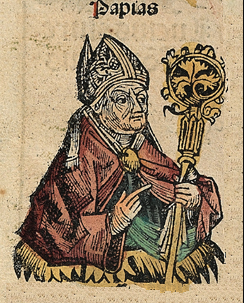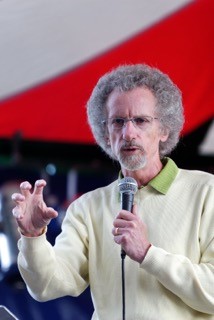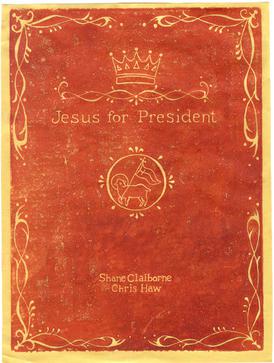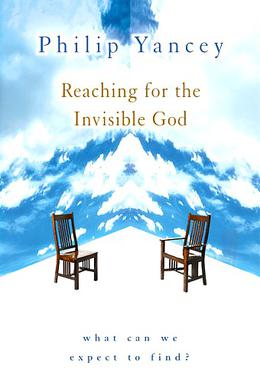Synopsis
With this book, Yancey intends to offer a new and different perspective on the life of Christ and his work – his teaching, his miracles, his death and resurrection – and ultimately, who he was and why he came. The author chronicles his journey of discovery, looking past traditionally perpetuated beliefs about Jesus and reporting facts about him and his teaching as recorded by the authors of the gospels. Juxtaposing the Gospel events with the world we live in today, The Jesus I Never Knew gives a dynamic portrait of this central figure of history. The author examines some of the radical words of Jesus with a willingness to tackle the difficult questions raised by them, and asks whether today Christians are taking them seriously enough.
Yancey affirms:
"No one who meets Jesus ever stays the same. In the end I found the process of writing this book to be a great act of faith-strengthening. Jesus has rocked my own preconceptions and has made me ask hard questions about why those of us who bear his name don't do a better job of following him." [2]
Candidly recalling his own journey of rediscovery of Jesus, Yancey demonstrates to his readers the arc of many Christians' intellectual faith walk. First he addresses possible misconceptions about Jesus physical appearance (probably not tall and gaunt, based on what one knows today of Jews of the time), moves onto his character, and his interactions with people and his disciples. He sincerely questions preconceived notions about who Jesus was and is, drawing from a number of sources including many of Hollywood's various celluloid representations. [3]
Right through the book, Yancey creates what is essentially a prose harmony of the Gospels, reconstructing Jesus life, challenges, and teachings in a fluid and easy language. The text is not academical, but the research is meticulous and diverse, with sections exploring essential questions, whilst others remind the reader of significant details of Jesus' life one may take for granted: "Distrusting crowds and public opinion, he spent most of his time in towns of small size and little importance" (p. 92). While Yancey could have speculated about how Jesus' ministry would have been different had it been concentrated in a major metropolis (ultimately irrelevant), his reminder of this detail shines additional light on the wonder that Jesus' ministry became a worldwide phenomenon. [4]

The Gospel of Mark is the second of the four canonical gospels and of the three synoptic Gospels. It tells of the ministry of Jesus from his baptism by John the Baptist to his death, burial, and the discovery of his empty tomb. There is no miraculous birth or doctrine of divine pre-existence, nor, in the original ending, any post-resurrection appearances of Jesus. It portrays Jesus as a teacher, an exorcist, a healer, and a miracle worker. He refers to himself as the Son of Man. He is called the Son of God, but keeps his messianic nature secret; even his disciples fail to understand him. All this is in keeping with Christian interpretation of prophecy, which is believed to foretell the fate of the messiah as suffering servant. The gospel ends, in its original version, with the discovery of the empty tomb, a promise to meet again in Galilee, and an unheeded instruction to spread the good news of the Resurrection of Jesus.
Antisemitism and the New Testament is the discussion of how Christian views of Judaism in the New Testament have contributed to discrimination against Jewish people throughout history and in the present day.

Papias was a Greek Apostolic Father, Bishop of Hierapolis, and author who lived c. 60 – c. 130 AD. He wrote the Exposition of the Sayings of the Lord in five books. This work, which is lost apart from brief excerpts in the works of Irenaeus of Lyons and Eusebius of Caesarea, is an important early source on Christian oral tradition and especially on the origins of the canonical Gospels.
The term "historical Jesus" refers to the reconstruction of the life and teachings of Jesus by critical historical methods, in contrast to religious interpretations. It also considers the historical and cultural contexts in which Jesus lived. Virtually all scholars of antiquity accept that Jesus was a historical figure, and attempts to deny his historicity have been consistently rejected by the scholarly consensus as a fringe theory.

The Antichrist is a book by the philosopher Friedrich Nietzsche, originally published in 1895. Although it was written in 1888, its content made Franz Overbeck and Heinrich Köselitz delay its publication, along with Ecce Homo. The German title can be translated into English as either The Anti-Christ or The Anti-Christian, depending on how the German word Christ is translated.

Jesus, also referred to as Jesus Christ or Jesus of Nazareth, was a first-century Jewish preacher and religious leader; he is the central figure of Christianity, the world's largest religion. Most Christians believe he is the incarnation of God the Son and the awaited Messiah prophesied in the Hebrew Bible.

Philip Yancey is an American author who writes primarily about spiritual issues. His books have sold more than 15 million copies in English and have been translated into 40 languages, making him one of the best-selling contemporary Christian authors. Two of his books have won the ECPA's Christian Book of the Year Award: The Jesus I Never Knew in 1996, and What's So Amazing About Grace? in 1998. He is published by Hachette, HarperCollins Christian Publishing, InterVarsity Press, and Penguin Random House.

The Gospel of Mary is a non-canonical text discovered in 1896 in a 5th-century papyrus codex written in Sahidic Coptic. This Berlin Codex was purchased in Cairo by German diplomat Carl Reinhardt.

The Christ myth theory, also known as the Jesus myth theory, Jesus mythicism, or the Jesus ahistoricity theory, is the view that "the story of Jesus is a piece of mythology", possessing no "substantial claims to historical fact". Alternatively, in terms given by Bart Ehrman paraphrasing Earl Doherty, "the historical Jesus did not exist. Or if he did, he had virtually nothing to do with the founding of Christianity."
The conditional preservation of the saints, or conditional perseverance of the saints, or commonly conditional security, is the Arminian Christian belief that believers are kept safe by God in their saving relationship with him upon the condition of a persevering faith in Christ. Arminians find the Scriptures describing both the initial act of faith in Christ, "whereby the relationship is effected", and the persevering faith in him "whereby the relationship is sustained." The relationship of "the believer to Christ is never a static relationship existing as the irrevocable consequence of a past decision, act, or experience." Rather, it is a living union "proceeding upon a living faith in a living Savior." This living union is captured in the simple command by Christ, "Remain in me, and I in you".

John 12 is the twelfth chapter of the Gospel of John in the New Testament of the Christian Bible. It narrates an anointing of Jesus' feet, attributed to Mary of Bethany, as well as an account of the triumphal entry of Jesus Christ into Jerusalem. The author of the book containing this chapter is anonymous, but early Christian tradition uniformly affirmed that John composed this Gospel.
The fate of the unlearned, also known as the destiny of the unevangelized, is an eschatological question about the ultimate destiny of people who have not been exposed to a particular theology or doctrine and thus have no opportunity to embrace it. The question is whether those who never hear of requirements issued through divine revelations will be punished for failure to abide by those requirements.
John Dickson is an Australian author, clergyman and historian of the ancient world, largely focusing on early Christianity and Judaism. He currently teaches at the graduate school of Wheaton College (Illinois).

Buddhism was known in the pre-Christian Greek world through the campaigns of Alexander the Great, and several prominent early Christian fathers, including Clement of Alexandria and St. Jerome, were aware of the Buddha, even mentioning him in their works. However, the majority of modern scholars who have studied both Buddhism and Christianity hold that there is no direct historical evidence of any influence by Buddhism on early Christianity. Scholars generally consider any such influence implausible given that first century Jews are highly unlikely to have been open to far eastern concepts that appeared opposed to some of their basic beliefs.

Christianity in the 1st century covers the formative history of Christianity from the start of the ministry of Jesus to the death of the last of the Twelve Apostles and is thus also known as the Apostolic Age. Early Christianity developed out of the eschatological ministry of Jesus. Subsequent to Jesus' death, his earliest followers formed an apocalyptic messianic Jewish sect during the late Second Temple period of the 1st century. Initially believing that Jesus' resurrection was the start of the end time, their beliefs soon changed in the expected Second Coming of Jesus and the start of God's Kingdom at a later point in time.
The Lord is a Christological book by Romano Guardini, a Roman Catholic priest and academic. It was first published in Germany in 1937 by Werkbund-Verlag, and an English-language translation was published in 1954 by Henry Regnery Company.

Christian sources, such as the New Testament books in the Christian Bible, include detailed stories about Jesus, but scholars differ on the historicity of specific episodes described in the biblical accounts of Jesus. The only two events subject to "almost universal assent" are that Jesus was baptized by John the Baptist and was crucified by the order of the Roman Prefect Pontius Pilate.

Jesus for President: Politics for Ordinary Radicals is a 2008 book co-written by the evangelical authors Shane Claiborne and Chris Haw, two important figures in New Monasticism. The book asserts that the countercultural themes in the ministry of Jesus, such as those of self-denial, are ignored by American Christians because they have become accustomed to exercising Christian privilege and are unwilling to give it up.

What's So Amazing About Grace? is a 1997 book by Philip Yancey, an American journalist and editor-at-large for Christianity Today. The book examines grace in Christianity, contending that people crave grace and that it is central to the gospel, but that many local churches ignore grace and instead seek to exterminate immorality. What's So Amazing About Grace? includes Bible stories, anecdotes from Yancey's life, accounts of historical events and other stories. These include a modern retelling of the Parable of the Prodigal Son, an account of Yancey's friendship with Mel White who came out as gay, a comparison of the teachings of early Christians Pelagius and Augustine of Hippo, and a summary of Karen Blixen's short story "Babette's Feast".

Reaching for the Invisible God: What Can We Expect to Find? is a book written by the evangelical writer Philip Yancey and published by Zondervan in September 2000. The popularity of Yancey's 1997 book What's So Amazing About Grace? helped boost the sales of Reaching for the Invisible God to the point that it appeared on religion bestseller lists immediately upon publication. Within a month, Zondervan reported sales of 94,000 copies. While preparing to write the book, Yancey asked several people how they knew that their trust in Jesus had changed their lives, and one Christian radio host responded, "I have no trouble believing God is good. My question is more, what good is he? ... I cry out to God for help, and it's hard to know just how he answers". Reaching for the Invisible God includes discussion of Yancey's bad experiences of growing up in a very judgmental church, a theme that he had previously discussed in The Jesus I Never Knew and What's So Amazing About Grace? and later returned to in Soul Survivor. In November 2000, Reaching for the Invisible God became the first print book to be released as an e-book by Zondervan, appearing on Microsoft Reader.















